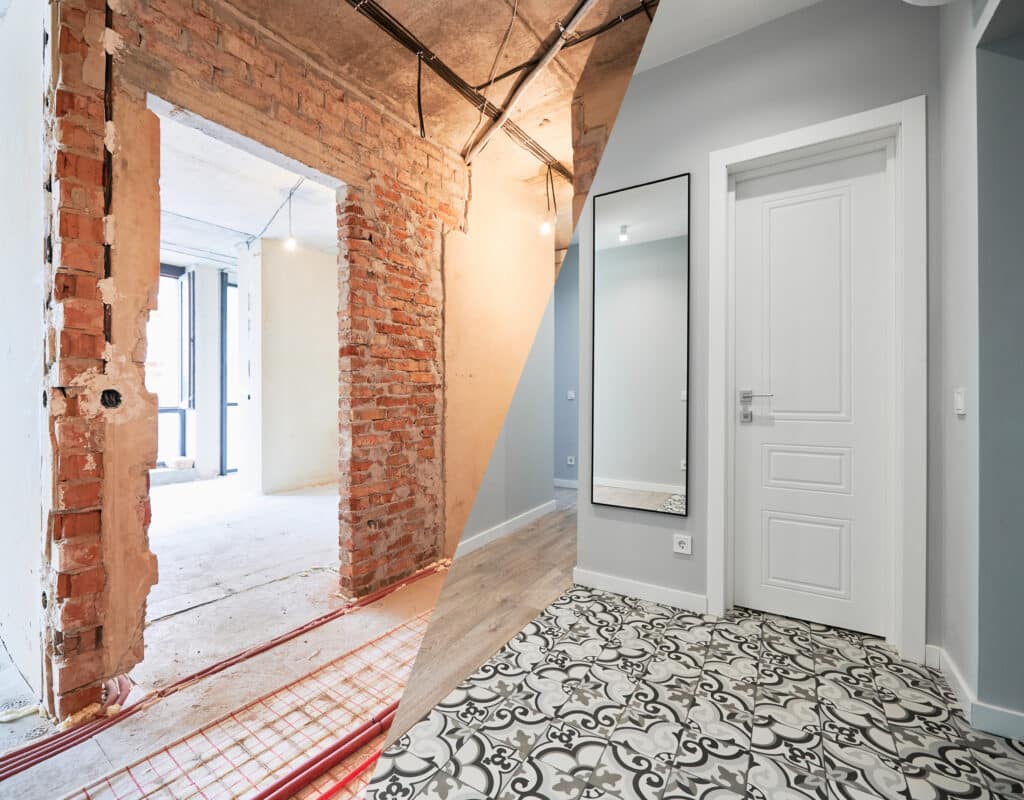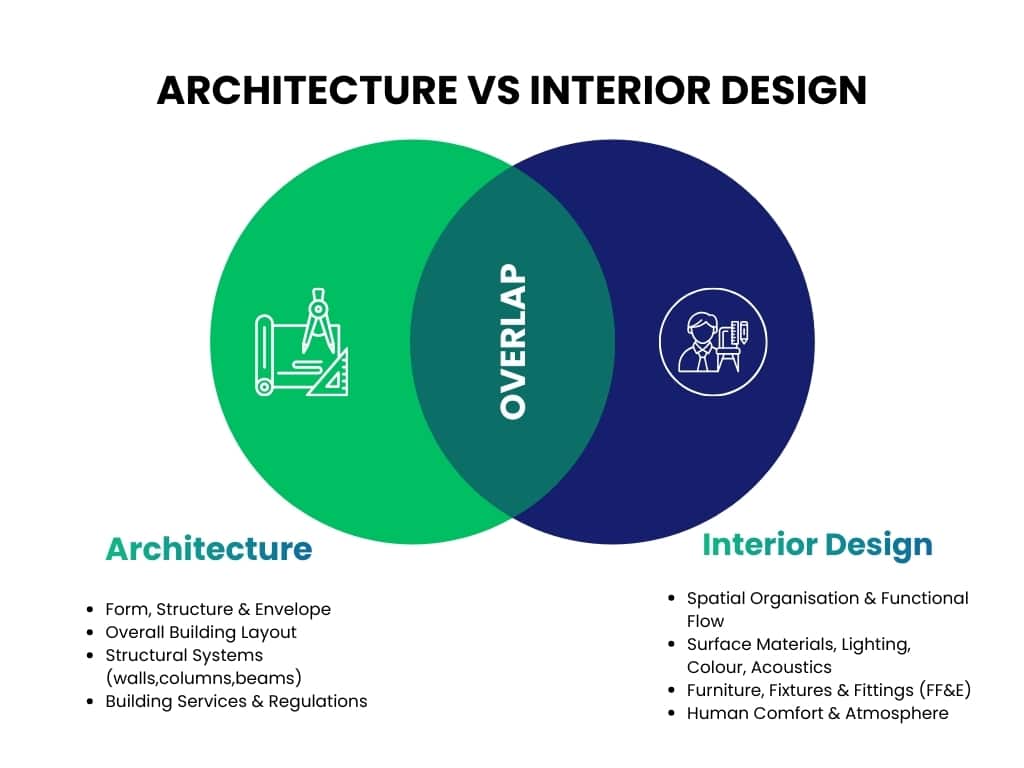The boundary between architecture and interior design is a well established territory, which has sparked passionate debate within the design professions for decades. For many architects, they will feel valid in claiming ownership of a building, given they are the ones commissioned to create them. However, the discussion is more fluid and nuanced than that, as both professions will invariably overlap, with their roles as part of a wider continuum rather than a strict line somewhere.
Historically, architecture is the older profession, dating back to ancient Egypt, with Imhotep often cited as the first architect after designing the earliest stepped stone pyramid.

Architecture, therefore, has deep historic roots. However, one could argue that interior design predates formal architecture, as our earliest ancestors decorated their caves long before constructing built structures. While this may seem like playful one‑upmanship, it demonstrates the symbiotic relationship between the two disciplines.
What becomes clear is that architecture and interior design are interdependent. You cannot truly separate one from the other; together they define and shape human environments. While they share this ultimate goal, the scope, scale and focus of their work differ considerably.

Practical Distinctions: Architecture vs Interior Design
Architecture
Architecture defines the structure and spatial framework, principally concerning itself with form, structure and distinguishing the envelope of a building, how it stands up, the function and where it sits within its surroundings.
- The overall building and layout
- Structural elements, ensuring stability
- Establishing building services and regulatory compliance
- Spatial volume and the relationship to elements such as light and circulation
Architecture’s purpose is to establish the container, the spatial and physical framework within which all human activity will take place. This is principally where architecture ends.

Interior Design
Interior Design picks up at this point, focusing on how people will experience and use the spaces created.
- Spatial organisation and the functionality and flow within new and r existing frameworks
- The materiality of the space, which will include colour lighting and any acoustical elements
- FF&E (furniture, fixtures & equipment) applications
- Human comfort, interactions, behaviours and general atmosphere
Interior design’s primary purpose is to attribute identity to a space, to provide usability and offer an emotional connection and response.
Where the Professions Overlap

As has been alluded to, in contemporary practice both professions should work collaboratively, simply because most projects demand a level of unification, for example:
- Architects can often extend their design approach and thinking to cover interior elements such as materiality and detailing such as bespoke cabinetry.
- Whereas interior designers will invariably influence architectural approaches and layouts through spatial strategies and planning, providing the point of view of the user experience.
- It is often said that while architecture creates the space, interior design delivers a sense of space.
Conclusion

It is important to recognise, that regardless of who plays what role within the delivery of a project, each profession brings both a collaborative understanding and their own individual insight into helping create the perfect space for a client. Architecture and interior design should be viewed as distinct yet integrated disciplines addressing different aspects of the built environment.
The distinction between architecture and interior design lies not in opposition but in reciprocity. Architecture defines the form, structure, and spatial potential of a building, while interior design transforms that framework into an environment tailored to human experience. The meeting point of the two disciplines fosters collaboration, ensuring that spaces are both technically sound and emotionally resonant.
Ultimately, successful design emerges when architectural integrity and interior expression work in harmony – creating environments that are functional, meaningful, and deeply connected to the people who will use them.
Frequently Asked Questions (FAQ)
What is architecture in simple terms
Architecture is the design of buildings – how they are planned, shaped, and built. It covers structure, safety, layout, and how the building fits into its surroundings.
What is interior design?
Interior design is the design of the inside of a building. It focuses on how a space looks, feels, and works for the people using it – including layout, colours, lighting, furniture, and materials.
What is the difference between architecture and interior design?
Architecture creates the structure of a building. Interior design shapes the experience inside it. Architects make the space; interior designers make the space usable, comfortable, and attractive.
Do interior designers and architects work together?
Yes. Architects and interior designers often work as a team. Architects focus on the structure, and interior designers focus on how people will use and enjoy the finished space.
Do I need an architect or interior designer for my project)
Hire an architect if you’re changing the building itself. This includes extensions, new builds, major changes. Hire an interior designer if you want to improve how your space looks, works, or feels. Many projects benefit from using both.
What is interior architecture?
Interior architecture focuses on changing or improving the inside layout of a building. This includes things like moving walls, reworking floorplans, or updating building systems. It sits between architecture and interior design, combining structure with user-focused design.
Is interior design only about decorating?
No. Interior design includes space planning, lighting, materials, accessibility, and how people use a space – not just choosing colours or décor. Decorating is only one small part of interior design.Lorem ipsum dolor sit amet, consectetur adipiscing elit. Ut elit tellus, luctus nec ullamcorper mattis, pulvinar dapibus leo.
Explore our Interior Design Courses
Thinking about a career in interior design? Discover our flexible, accredited Interior Design courses and start building your future in the design industry.

